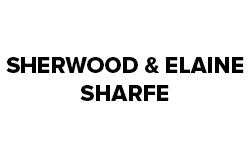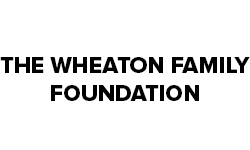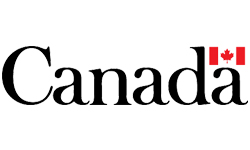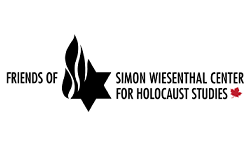Part B: Learning Plan
- Honour the differences of stories, traditions, and celebrations among individuals in their classroom and school.
- Understand how past family experiences and stories connect them to their place and community.
- Explore kinship/family relationships according to traditional teachings.
CITIZENSHIP INQUIRY
- Relate family events and stories of the recent or distant past to the students’ place. (DR1.1)
Students will understand how past family experiences and stories connect them to their place.
- Describe kinship patterns of the past and present and describe according to traditional teachings (e.g., Medicine Wheel teachings). (DR1.2)
Students will explore kinship/family relationships according to traditional teachings.
- Describe the diversity of traditions, celebrations, or stories of individuals in the classroom and school. (IN1.1)
Students will honour the stories, traditions, and celebrations of individuals in their classroom and school.
QUESTIONS TO GUIDE INQUIRY
Teachers may want to consider putting the questions into a “Before, During, After” chart to note the changes in students’ thinking as a result of the inquiries.
Essential Questions – Guiding Questions:
- How are present events related to past events?
- How does the past influence:
- Your present behaviour, ideas?
- Your future behaviour, ideas?
- How does my background/point of view influence my behaviour?
- What do I think about the past?
- What story is my behaviour telling?
- Is my behaviour thought about and planned or am I reacting?
- How do I change my behaviour? Change my story?
Vocabulary
Culture
- knowledge
- shared beliefs and values of group
- people with shared beliefs and practices
- shared attitudes
Point of View
- opinion
- viewpoint
- position
Tradition
- custom or belief
- handing down of customs
- accepted unwritten guidelines/ideas
Diversity
- social inclusiveness
- variety
- consisting of different things
- differing from one another
History
- family history, background
CONNECT TO TOPIC AND SURFACE STUDENTS’ THINKING ABOUT …
- Steps/processes required to learn a task/behaviour/solve a problem
- Actions today will affect how students choose/are able to do things in the future
- Consider the impact of culture on behaviours and worldview
- Think about their thinking – (Develop awareness of their thinking)
Are cultures more alike or different?
Surface what students know about their family history and cultural traditions.
- What do their names mean? First name, Last name.
- Why were they given their name?
- If community buildings or streets have names of people important to the community ask students if they know, and find out the origin of the name of the building or street.
- How is their community impacted by different cultures?
- Look for similarities and themes in naming practices of people, buildings.
Students are learning that differences among people or diversity creates a rich culture that is valued and respected by citizens and Canada. Students will explore the similarities and differences that exist among different cultures, beginning with similarities.
- Everybody Bakes Bread – Norah Dooley. This book talks about the many different kinds of bread there are in a child’s community, including chapatis, challah, and papusaa. This book gets students thinking about the similarities between cultures regarding food.
- Create lists for many different kinds of breads
- Create lists for many different kinds of similar foods
- Every culture has a way of saying hello. Brainstorm and have students research the many different ways of saying hello. Hello, Tansi, Bonjour, Hola, Aloha, etc.
Teachers should continue to connect learning outcomes to previous learning/ future learning.
- Pose the essential and guiding questions and allow students to discuss their thoughts on the matter.
- Determine what the students know, understand, need to be able to do to master/answer the essential questions (connect to content). Additional guiding questions can be added as required. Students are encouraged to add their questions to the others.
- Create Know, Want to know, Learned Chart – identify vocabulary that requires development
- Surface any additional questions students might have as a result of their discussions about the essential questions.
- Post student answers for reflection at end of study.
- Events and ideas from the past influence the present.
- Lives of people in the past can serve as models of how to live as a contributing citizen.
- Actions and behaviours are learned.
- Past actions affect people and relationships in different ways.
- Diversity can have a variety of impacts.
- Background can impact points of view.
- Cultural practices that have their roots in history or another country are constantly changing and often have many similarities.
DEVELOPING UNDERSTANDING
Identify local people whom students might want to interview to support their research.
- Elders
- Knowledge Keepers
- Family members
- New Immigrants – Youth and Adults
- Community support members
- Consider technology links with youth in provincial, national, and global communities
- Explore the similarities and differences that exist among different cultures; and,
- Look for connections between current practices and celebrations and past cultures and traditions.
Every culture has similar customs or celebrations. Brainstorm family traditions or special events like marriages, births, birthdays, graduation, anniversaries, deaths, family reunions
- Generate wide variety of cultures for students to research or survey classroom for the variety of cultures represented there.
- Research and present information in pairs or groups of three.
Presentations should include information on:
- Special Events
- What are they?
- Names, times
- How do they celebrate?
- Ceremonies?
- Foods?
- Music?
- How are families involved?
- What is the history of celebrations – link to place/country of origin
- Why is the celebration important? What do families or celebrants believe about the celebration?
- What are they?
- Highlight differences, similarities
- foods eaten,
- songs sung,
- prayers, verses,
- leaders at celebrations,
- special clothes worn
- Has celebration or recognition of event changed over time? How?
- The manner in which similar holidays are celebrated or recognized indicate different points of view and beliefs about traditions. Cultural practices that have their roots in history or another country are constantly changing and often have many similarities. In a variety of ways, provide examples of traditions and celebrations that connect people to the past, and consider why these traditions and celebrations are important today. Chart similarities and differences.
- Students will understand how past is connected to the present
- Students have been talking about how they celebrate traditions and family events. Have student create a personal family timeline documenting significant episodes in student and/or family life.
- Family connections to community before student birth (before)
- Birth of student, birth of siblings, extended family members (after)
- Significant events linking family/student to community
- Consider linking to Medicine wheel teachings where direction indicates times of life.
- Students have been talking about how they celebrate traditions and family events. Have student create a personal family timeline documenting significant episodes in student and/or family life.
- Students will explore the kinship/family relationships according to traditional teachings. (Check treaty education resources for info on traditional teachings)
- Students will understand how past is connected to the present
- What are the benefits of living as a family?
- What are the different roles in a family and what are the responsibilities of those roles?
- What makes families special?
- What would our community be like without families?
- Discuss why learning about the past is important to be a good citizen, and how it affects the future.
- Give examples of decision making in their families and community.
- Give examples of community/ family/ cultural heroes.
APPLY AND EXTEND KNOWLEDGE
- Consider how lives of people in the past can serve as models of how to live as contributing citizens and how people in the past are connected to place today.
- Research community names, building names, street names to find out history of name and why it is important to the community
- Connect info to study about responsibility toward community stewardship
- What story was the individual’s behaviour telling?
- Have student indicate how individual demonstrated community stewardship
- Invite an Elder or Knowledge Keeper to explain the teachings of the Medicine Wheel: 4 directions – South – infant/childhood, West – adolescence, North – adulthood, East – old age, death.
EVIDENCE OF LEARNING
- Review students’ original thinking on the essential questions. Has their thinking changed?
- What new learning supports their change?
Inquiry Question:
Are cultures more similar or different?
What are some of the big ideas that students are seeing?
Why is this important to know?
Students will demonstrate their understanding that we act based on our worldviews, our cultural experiences and therefore may have different points of view.
What is my story?
- Have student choose one custom, tradition, celebration practiced in their life.
- Have students describe the event and tell:
- how the event is rooted in the past;
- how the event is important to the student (influences present behaviour); and,
- what the event says about what the student values.
Informal Indicators of Understanding
What story is my behaviour telling?
- Give examples of situations and ask students to predict what might happen next.
- Identify thinking or reasons for predictions i.e. similar past experiences, read about similar situation in stories
- Recognize behaviours and attributes of appropriate role models (i.e. Identify and/or model behaviours of a supportive reading buddy.
- Revisit K-W-L chart as a whole class to see if questions and ‘want to knows’ were addressed
STUDENT CITIZENSHIP JOURNAL OPPORTUNITIES
Students are encouraged to respond using a variety of genres.
- An interesting cultural practice or tradition that I learned about is…
- A cultural practice that has its roots in history and/or another country but has changed over time is …
- A cultural tradition that is celebrated in similar ways across cultures is… The reason I think this is so is because…
© 2024 Concentus Citizenship Education Foundation Inc. All Rights Reserved.










